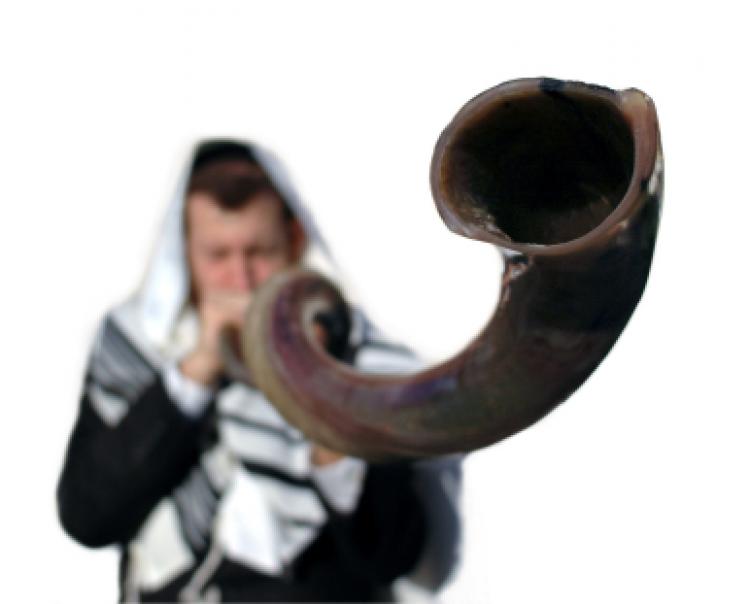
AM and PM Explained
How does the 12-hour clock system work? Is midnight 12 am or 12 pm?
Rosh Hashana is celebrated as the Jewish New Year among many Jewish communities worldwide. It starts 163 days after the first day of Passover. Rosh Hashana lasts for up to two days in many communities.

The shofar is an important symbol of Rosh Hashana (also known as Rosh Hashanah).
©iStockphoto.com/Howard Sandler
Rosh Hashana is a day of rest and prayer so Jewish people are limited from performing many activities that are regarded as “work”. Extra prayers are said and poems are read. The shofar, an instrument made from an animal's horn, is blown to “awaken” people of the Jewish faith and alert them to God’s judgment for the coming year.
In the afternoon of the first day of Rosh Hashana, people may perform tashlikh. This is the custom of reciting prayers near naturally flowing water, such as a stream or river, and symbolically throwing one’s sins away in the form of small pieces of bread or other food. In New York City, many Jewish people perform tashlikh from the Brooklyn and Manhattan bridges. If there is no local river or stream, people may use a fish pond or mikveh (ritual bath).
During Rosh Hashana many Jewish communities eat a range of symbolic foods at a special meal for family and friends. These may include: apples; black-eyed beans; dates; gourd; honey; leeks; pomegranates; spinach; and tongue or other meat from the head of an animal. Popular dishes include: gefilte fish (poached fish balls); lekach (honey-flavored sponge cake); and challah (a round loaf of bread). Newly ripe fruits are often served on the second day of Rosh Hashana.
Rosh Hashana is a public holiday in Israel. It is not a nationwide public holiday in countries such as Australia, Canada, the United Kingdom or the United States. However, Rosh Hashana can be taken as an optional holiday in Texas and could be designated as a legal holiday for court employees in Florida's judicial circuit in the United States. Moreover, Jewish organizations may be closed or have restricted opening hours to allow special events to be held.
In the Jewish calendar, the year can begin on 2 different days. For religious purposes, it begins on the first day of Nisan. This makes the month of Tishrei the 7th month of the Jewish year. However, according to Jewish civil time reckoning, the year number changes on the first of Tishrei, the day of Rosh Hashana. So, since the months are usually numbered according to the religious calendar, the Jewish New Year technically begins on the 7th month of the year.
Festivals to mark the beginning of a new year in the fall have been held since the earliest days of the Israelites. These took the form of prayers of thanks for the grain harvest. The custom of blowing trumpets on the 10th day of the month of Tishrei is first described in the vision of Ezekiel, a prophet who lived sometime around 600–500 BCE. This custom has continued into modern times.
Rosh Hashana is the first of a period of 10 days known as the Yamim Noraim (Days of Awe, High Holidays). In this period, people of Jewish faith are required to carry out a process of self-examination and repentance. Yom Kippur is the last of the Yamin Noraim.
An important symbol of Rosh Hashana is the shofar, a horn of a ram or other animal that is blown to produce a loud sound. This symbolically awakens people to prepare them for the coming judgment. Other symbols of Rosh Hashana include: pomegranates or apples with honey (a sweet new year); a round loaf of bread known as challah (the cycle of the year); dates; carrots; fish; and displays of newly ripe fruits.
In the Jewish diaspora—Jewish communities outside of Israel—an extra day is usually added to religious observances, with the exception of Yom Kippur, which lasts only one day worldwide, and Rosh Hashana, which is celebrated over two days in both Israel and the diaspora.
This custom has its roots in ancient times when the beginning of the months in the Jewish calendar still relied on the sighting of the crescent Moon following a New Moon.
The beginning of a new month was determined by the Sanhedrin, the supreme court of ancient Israel in Jerusalem. Once the date was published, messengers were dispatched to spread the news among Jews living abroad. Since this process took some time, it was decreed that Jews outside of ancient Israel were to observe every holiday for 2 days to make sure that the rules and customs applicable to each holiday were observed on the proper date. This rule is still observed today.

How does the 12-hour clock system work? Is midnight 12 am or 12 pm?

Why do many countries set the clocks back and forth an hour twice a year?

Why are there 12 months? How long are they, and what do the month names mean?

Coordinated Universal Time (UTC) is the basis for civil time today. This 24-hour time standard is kept using highly precise atomic clocks combined with the Earth's rotation.